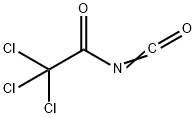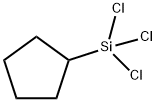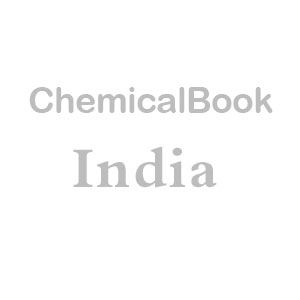N-HEXADECYLTRICHLOROSILANE
- CAS NO.:5894-60-0
- Empirical Formula: C16H33Cl3Si
- Molecular Weight: 359.88
- MDL number: MFCD00040111
- EINECS: 227-575-2
- SAFETY DATA SHEET (SDS)
- Update Date: 2024-12-18 14:08:52

What is N-HEXADECYLTRICHLOROSILANE?
Chemical properties
Colorless to yellow liquid.
The Uses of N-HEXADECYLTRICHLOROSILANE
Intermediate for silicones.
General Description
N-HEXADECYLTRICHLOROSILANE is a colorless to yellow liquid with a pungent odor. Material will burn though N-HEXADECYLTRICHLOROSILANE may require some effort to ignite. N-HEXADECYLTRICHLOROSILANE is decomposed by moisture or water to hydrochloric acid with evolution of heat. N-HEXADECYLTRICHLOROSILANE is corrosive to metals and tissue.
Air & Water Reactions
Reacts violently with water, steam, moist air, alcohols, acetone, light metals with generation of heat and combustible (H2) and corrosive (HCl) gases. On contact with air N-HEXADECYLTRICHLOROSILANE gives off HCl gas. REF [Handling Chemicals Safely, 1980 p. 924]. Fumes in air.
Reactivity Profile
Chlorosilanes, such as N-HEXADECYLTRICHLOROSILANE, are compounds in which silicon is bonded to from one to four chlorine atoms with other bonds to hydrogen and/or alkyl groups. Chlorosilanes react with water, moist air, or steam to produce heat and toxic, corrosive fumes of hydrogen chloride. They may also produce flammable gaseous H2. They can serve as chlorination agents. Chlorosilanes react vigorously with both organic and inorganic acids and with bases to generate toxic or flammable gases.
Hazard
Strong irritant. Combustible. Evolves hydrogen chloride in the presence of moisture.
Health Hazard
TOXIC; inhalation, ingestion or contact (skin, eyes) with vapors, dusts or substance may cause severe injury, burns or death. Contact with molten substance may cause severe burns to skin and eyes. Reaction with water or moist air will release toxic, corrosive or flammable gases. Reaction with water may generate much heat that will increase the concentration of fumes in the air. Fire will produce irritating, corrosive and/or toxic gases. Runoff from fire control or dilution water may be corrosive and/or toxic and cause pollution.
Fire Hazard
Combustible material: may burn but does not ignite readily. Substance will react with water (some violently) releasing flammable, toxic or corrosive gases and runoff. When heated, vapors may form explosive mixtures with air: indoors, outdoors and sewers explosion hazards. Most vapors are heavier than air. They will spread along ground and collect in low or confined areas (sewers, basements, tanks). Vapors may travel to source of ignition and flash back. Contact with metals may evolve flammable hydrogen gas. Containers may explode when heated or if contaminated with water.
Flammability and Explosibility
Non flammable
Properties of N-HEXADECYLTRICHLOROSILANE
| Melting point: | >20°C |
| Boiling point: | 202 °C |
| Density | 0.992 g/mL at 20 °C(lit.) |
| vapor pressure | 0.007-4220000Pa at 20℃ |
| refractive index | n |
| Flash point: | 154°C |
| form | liquid |
| Specific Gravity | 0.98 |
| color | Colorless to Almost colorless |
| Water Solubility | 673g/L at 30℃ |
| Hydrolytic Sensitivity | 8: reacts rapidly with moisture, water, protic solvents |
| EPA Substance Registry System | Silane, trichlorohexadecyl- (5894-60-0) |
Safety information for N-HEXADECYLTRICHLOROSILANE
Computed Descriptors for N-HEXADECYLTRICHLOROSILANE
New Products
4-Piperidinemethanol Ethyl 2,4-Dihydroxy-6-methylnicotinate Ethyl isonicotinate 3-pyridine methanol N-Methyl 4-chloro-pyridine-2-carboxamide 2-Fluoro-6-iodobenzoic acid 2-((2,6-difluorobenzyl)(ethoxycarbonyl)amino)-4-((dimethylamino)methyl)-5-(4-nitrophenyl)thiophene-3-carboxylic acid Ethyl2-oxo-2,3,9,10-tetrahydro-1H-pyrido[3',4':4,5]pyrrolo[1,2,3-de]quinoxaline-8(7H)-carboxylate Elinzanetant tert-butyl 2-(4-amino-6-chloropyrimidin-5-yloxy)ethylmethylcarbamate Phenylazomalononitrile 5,6 Dimethoxy-1-indanone 3-Iodophenylacetic acid 2-Hexyn-1-ol Dibenzo-18-crown-6 2-Propanamine, 1-chloro-, hydrochloride (9CI) 3-Pyridineacetonitrile, α-hydroxy- 3-(hexyloxy)-4-(pyridin-3-yl)-1,2,5-thiadiazole N Ethylmethylamine Ethyl Methanesulfonate N N' DimethylEthylenediamine Lead II Bromide Variamine Blue B Diazonium salt N N N'Trimethyl ethylenediamineRelated products of tetrahydrofuran








You may like
-
 Trichloro(hexadecyl)silane CAS 5894-60-0View Details
Trichloro(hexadecyl)silane CAS 5894-60-0View Details
5894-60-0 -
![4-chloro-7H-pyrrolo [2,3-d]pyrimidine 3680-69-1 98%](https://img.chemicalbook.in//Content/image/CP5.jpg) 4-chloro-7H-pyrrolo [2,3-d]pyrimidine 3680-69-1 98%View Details
4-chloro-7H-pyrrolo [2,3-d]pyrimidine 3680-69-1 98%View Details
3680-69-1 -
 4'-Benzyloxy-2-bromopropiophenone 98%View Details
4'-Benzyloxy-2-bromopropiophenone 98%View Details
35081-45-9 -
 53928-30-6 98%View Details
53928-30-6 98%View Details
53928-30-6 -
 5162-90-3 2-Amino-3-(1,2-dihydro-2-oxoquinoline-4-yl)propanoic acid 97%View Details
5162-90-3 2-Amino-3-(1,2-dihydro-2-oxoquinoline-4-yl)propanoic acid 97%View Details
5162-90-3 -
 4-(4-Chlorobenzyl)-2-(1-methylazepan-4-yl)phthalazin-1(2H)-one hydrochloride 98 %View Details
4-(4-Chlorobenzyl)-2-(1-methylazepan-4-yl)phthalazin-1(2H)-one hydrochloride 98 %View Details
79307-93-0 -
 29676-71-9 99%View Details
29676-71-9 99%View Details
29676-71-9 -
 (R)-2-amino-N-benzyl-3-methoxypropanamide 98%View Details
(R)-2-amino-N-benzyl-3-methoxypropanamide 98%View Details
196601-69-1
